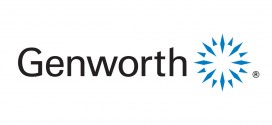Today’s Boomers will, on average, live 20 to 25 years in retirement, and one in four will live to at least age 90. As stated in a previous article, longevity has become the “fountain of youth,” and many of today’s Boomers are coming to grips with the new “retirement reality” that will be the world they wake up to for the next two or three decades. More than ever, the need for sustainable income in retirement is vital for this demographic (and the ones to follow).
A recent Wells Fargo survey found 70% of middle-class Americans do not think Social Security will be their primary source of income in retirement, and nearly 2/3 of Boomers have relied on 401(k), IRA or other qualified plans as a means to save for retirement.
Now having saved considerable assets in these qualified plans, they find Uncle Sam standing there with his hand out, wanting his share of your client’s money once that magic age of 70-1/2 is reached, even if those dollars are still in deferral. It’s known as the Required Minimum Distribution.
At age 70-1/2, all non-Roth qualified plans are subject to a Required Minimum Distribution calculation, based on the IRS tables, even if those dollars have yet to be tapped as income in retirement. Each 401(k) has its own RMD calculation, while all non-Roth IRAs are lumped together to determine the RMD payable to the IRS each year.
For those in a high tax bracket, this RMD requirement can create an adverse tax situation.
Historically, there have been three basic ways to address the RMD issue, each having their own unique disadvantages to the qualified plan owner:
1. Take the RMD from the client’s IRA (or 401k) still in deferral. This reduces the future growth prospects of this retirement account in the future.
2. Convert the IRA (or 401k) into an income stream. This option produces less income now than in the future and subjects the income to income taxes (which may be greater than the RMD obligation) and could push the client into a higher marginal rate.
3. Pull the RMD from a single IRA. This option results in money being set aside for future spending needs and is prematurely distributed at an accelerated rate.
Enter Uncle Sam with a solution…the QLAC.
The IRS rules, finalized in July 2014, defined the rules and requirements for the establishment of Qualified Longevity Annuity Contracts (QLAC). In simple terms, a QLAC permits a client to move a portion of their IRA or 401(k) assets and avoid RMDs until a maximum age of 85 (rather than the standard RMD age requirement of 70-1/2). The goal was to provide both tax and longevity benefits to future generations, who are living longer than their parents and grandparents.
Two basic rules govern QLAC contributions, a percentage limit and an overall limit (or cap).
Under the percentage rule, individuals may divert a maximum of 25% of their retirement account assets into a QLAC. This 25% limit applies to all IRAs, SEPs, SIMPLEs and 401(k) assets combined. The amount diverted into a QLAC is not subject to the 70-1/2 RMD rule.
For IRAs, the 25% limit is based on the fair market value as of 12/31 of the year prior to the QLAC purchase. For 401(k) assets, it is based on the fair market value as of the last valuation date (not prior year end), and adjusted for any subsequent contributions or distributions after the last valuation date.
Under the overall limit (cap), an individual may divert no more than $125,000 in total QLAC purchases from all sources. When the rules are applied, it is the LESSER of the 25% rule or the $125,000 cap.
So what are the benefits of a QLAC?
Clients utilizing a QLAC benefit from a reduced RMD calculation are able to slow the liquidation of deferred IRA assets, allowing them to continue to grow into the future. Especially for those who are in a high marginal tax rate, the QLAC may permit an individual to manage income more efficiently in retirement and reduce their RMD tax burden.
Any insurance carrier who wishes to offer a QLAC must follow certain IRS guidelines. The carrier must clearly state the fixed annuity being offered is intended to be a QLAC, and they must adhere to the 25%/$125k contribution limits. The product must be a fixed annuity (indexed and variable annuities cannot be used as QLAC, although the IRS can issue guidance to exceptions to the FIA or VA prohibition in the future).
A QLAC annuity must have an income start date no later than age 85 and cannot provide a cash surrender value (or similar feature). Death benefit options are limited to certain forms of survivor annuity payments or a return of premium feature.
QLAC rules do not apply to defined benefit plans; however, both 403(b) and governmental 457 plans may also offer QLAC. QLAC qualified plan rules (not IRA rules) apply, and the 25% limitation applies to each plan, which is similar to a 401(k). Non-governmental, tax-exempt entities may not offer a QLAC exception under the July 2014 Treasury department ruling.
So what happens if my client makes an error in the calculation and overfunds a QLAC? Excess contributions must be returned by the end of the following year, or the entire QLAC is disqualified. There is no penalty imposed on excess contributions, so long as they are promptly returned to the client’s IRA or qualified plan (or as a non-QLAC annuity).
Upon the death of the annuitant, lump sum benefits (if elected) are to be paid to the named beneficiary by 12/31 of the year following death. Death benefits under this option are limited to return of premium less any benefit received by the annuitant prior to death. Beneficiaries can be spousal or non-spousal under this rule.
QLAC annuities may offer life and annuity death benefit options to surviving spouses, equal to or less than what the deceased spouse was receiving (or would have received if the annuitant died prior to receiving QLAC benefits). Non-spousal beneficiaries have two basic options available: one that guarantees payments to a non-spouse beneficiary and another that does not.
At present, a limited number of insurance carriers are currently providing QLAC qualified annuities and may not offer all the benefits and features available under the IRS final rules as published. It is important that you understand the rules, but also know that the rules do give carriers some latitude in how they design qualifying QLAC products.
So who’s a QLAC prospect?
1. Wealthy clients who are seeking to reduce their tax liability or limit RMDs and own Traditional IRAs, SEP or SIMPLE IRAs, 401(k), 403(b) or Governmental 457 plans.
2. Clients who are concerned about income longevity in retirement or want to defer income into later years as a hedge against inflation.
3. Clients who are concerned about leaving an income to a surviving spouse.
So let’s look at an example of what a QLAC can do.
| Husband IRA: $500,000
QLAC Calculation: $500,000 x 25% = $125,000
RMD, Based on $500K IRA = $18,868 (Age 71)
RMD, Based on $375K IRA = $14,151 (Age 71)
|
Spouse IRA: $250,000
QLAC Calculation: $250,000 x 25% = $62,500
RMD based on $250,000 = $9,434 (Age 71)
RMD based on $125,000 = $7,075 (Age 71) |
Together, they defer $187,500 for future income needs, and these QLAC account values are not counted in their RMD calculations.
As we teach in our Income Planning University ONLINE, there is no “one size fits all” solution when it comes to retirement. Each client has his/her own unique wants, needs and dreams for what their retirement reality will look like. Agents and advisors have an obligation to educate them on what the next two to three decades of their life may look like (as most pre-retirees haven’t really given this a lot of thought), and help them understand the financial implications of these needs, wants and dreams.
We also need to educate them on the importance of guaranteed sources of income in retirement, liquidity dollars (or a plan) to mitigate the impact of declining health as we all get older and how to combat the inflation monster that devours the purchasing power of our money over time.
For those who are looking to minimize their tax burden in the early years of retirement, who have a history of longevity and want to slowly liquidate deferred qualified funds over a longer time horizon, QLAC is an option they may want to consider. QLAC may provide the ability for your clients to more efficiently manage income and taxes in retirement.
Your clients will be reading about QLAC, and will be asking questions. It can be a great conversation starter that leads you to having that important income planning conversation you’ve been wanting to have with them – and may reveal other planning opportunities in the process.
QLAC is not for everyone, but for a unique segment of the marketplace, it can provide both tax savings and the ability to manage income long into retirement. Working with your client’s CPA or tax advisor may be beneficial when having the QLAC discussion with your clients, and could also create an opportunity to glean referrals from a new center of influence.
Remember, income planning is much more than Social Security optimization. The 50+ marketplace controls more than $87 trillion in assets, and they are concerned with outliving their income, how to pay for healthcare in retirement, and most importantly, having financial peace of mind so they can enjoy the lifestyle they desire in retirement.
QLAC is but one of the many options available to help them solve their retirement income concerns.
 AgenteNews Insurance Producer's Online Resource
AgenteNews Insurance Producer's Online Resource






